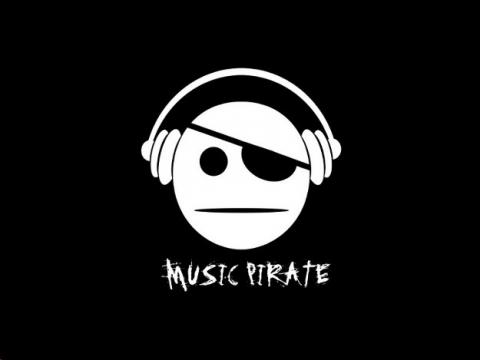Piracy Gets Washed Down With Streaming – But Is It Good for the Music Industry?

Considering the tremendous and inescapable wave of its aftermath, Napster’s actual reign over the Internet was surprisingly brief. Launched in June of 1999 and quickly adopted in dorm rooms and basements throughout the world, the notoriously easy-to-use and simple-to-find peer-to-peer file sharing network lasted only 25 months before a lawsuit and consequent court injunction from the Recording Industry Association of America (RIAA) forced the entire operation to shut down permanently.
While many other websites and platforms quickly rushed in to take its place, none could ever truly hold court over the Internet piracy realm quite like Napster did. At the height of its powers, the site claimed some 80 million registered users who were able to upload, download, and exchange music and media more quickly and conveniently than if they’d been invited to a slumber party with all the neighborhood High Fidelity-types.
The end result of peer-to-peer (P2P) file sharing technology was not only that the floodgates of the Internet’s capacity for copyright evasion were flung wide open, but that, perhaps even more significantly, an entire generation of media consumers got to experience a long and sinful taste of high-dosage downloadability. With so much free material available through a simple search-and-click function, the limits of music ownership were defined only by the size of one’s hard drive and the speed of one’s dial-up.
This was, of course, an ominous death knell for the music industry. But, much to their credit, they refused to ever take heed of it. The compression of music onto MP3s playable through personal computers with software like iTunes was a prime factor in making Napster as easy and usable as it was. Appropriately, then, the iTunes Store was meant to cork the flood of illegal piracy flowing through the Web. More affordable prices and á-la-carte download options gave iTunes the moral high ground for righteous consumers and the torrenting-illiterate – but even their 99-cent bargains couldn’t totally woo listeners into paying for music anymore.
The music industry as a collective force needed to do more to put an end to piracy. Between 2003 and 2008, the RIAA waged a fear campaign by filing 35,000 or more lawsuits against individual people caught illegally downloading or distributing copyrighted material. But still, the torrenting and P2P sites themselves flourished, while the well-heeled RIAA team’s insistence on shaking down their own besotted fans for pennies was a public relations disaster. In the end, it may not have even done much to stop piracy at all.

The music industry seemed all but resigned when a new service came along in the form of Spotify – a subscription-based radio-esque platform that allowed users to hear whatever music they wanted, whenever they wanted. It maintained all of the gluttonous aspects of Napster’s wide reach within a perfectly situated loophole: if users didn’t actually own the copyrighted material they listened to, they couldn’t be said to be doing anything wrong. By simply suffering through a few commercials or paying a nominal monthly fee, Spotify listeners could listen to music to their heart’s content – legally.
Eight years on, what seemed like the industry’s saving grace with Spotify may have turned out to be a damning pact with the devil. Much has been written about the paltry sums musical artists receive in royalty payments as a result of their Spotify plays, but consumers are, by now, so highly accustomed to on-demand content that a reversal to old industry methods seems not only unlikely, but unfathomable. At any rate, the main line of defense for streaming services has always been something along the lines of: “Well, at least it’s better than illegal downloading.”
But is it? Have streaming services truly helped curb piracy, or have they only found a happy loophole? Is streaming, as a legal and readily available service, really any better for artists than losing a few physical CD sales to torrenting sites?
As a matter of fact, according to P2P monitoring software company Rightscorp, illegal file sharing has increased 44 percent since 2008. However, that statistic ought to come with a bold asterisk. While the increase reflects the total size in bytes of files being shared – including everything from music to movies to software and more – the actual number of people who share files has decreased dramatically. It seems that fewer people are simply sharing ever-larger amounts of data.

Even so, there are a number of assumptions built into the idea that streaming is a better alternative to piracy, the primary one being that would-be or former pirates have repented their ways and turned to streaming as a legal alternative. Yet on the other hand, it could equally be true that would-be or former patrons of record stores – or even iTunes stores – may now feel much less inclined to shell out a few bucks for a new record or to take up more precious memory space on their drives when they could just stream instead.
So has streaming saved the industry, or only hastened its demise? Unfortunately, it might still be too soon to tell. The Institute for Prospective Technological Studies ran an economic analysis from 2013 to 2015 on Spotify’s propensity to displace the downloading of songs, whether through legal or illegal means. In the end, the gains in revenue made by replacing illegally downloaded content with legal streaming plays seemed only to offset the losses from the displacement of legal downloads by the use of streamed content. Financially, it’s a total wash.
The entire industry seems stuck at an impasse as far as the future of content distribution is concerned. For the amount of consumer activity that streaming now dictates, it may be a very difficult roadblock to navigate. The RIAA reported that streaming services accounted for 34.3 percent of all U.S. music industry revenue for 2015 – roughly the same as revenue garnered from digital download sales (34 percent) and only slightly more than revenue from physical sales (28.8 percent– and the resurgence of vinyl accounts for some $416 million of that).
As the decade rolls on, illegal piracy is increasingly falling from the music industry’s table of concerns. It’s accepted as an inherent risk of loss: Just as we used to make cassette tape copies of the vinyl from our sibling’s collection and pass it on to friends, peer-to-peer sharing will always haunt the music industry, if only because sharing is part of the nature of loving music itself.
The staunch and sophisticated campaign to wipe out torrenting and file-sharing websites has made it virtually impossible to pirate content today without being infested with malware or privy to an invitation-only elite network. Today, the concern of the industry should not be what to do about illegal activity, but how to make music a more consumer- and artist-friendly marketplace for the millions who still thirst to hear what’s going on.
Author Bio:
Sandra Canosa is Highbrow Magazine’s chief music critic.
For Highbrow Magazine
Photo Credits: Nick Youngson (Blue Diamond Gallery, Creative Commons); Pxhere (Creative Commons)




























































































































































































































































































































